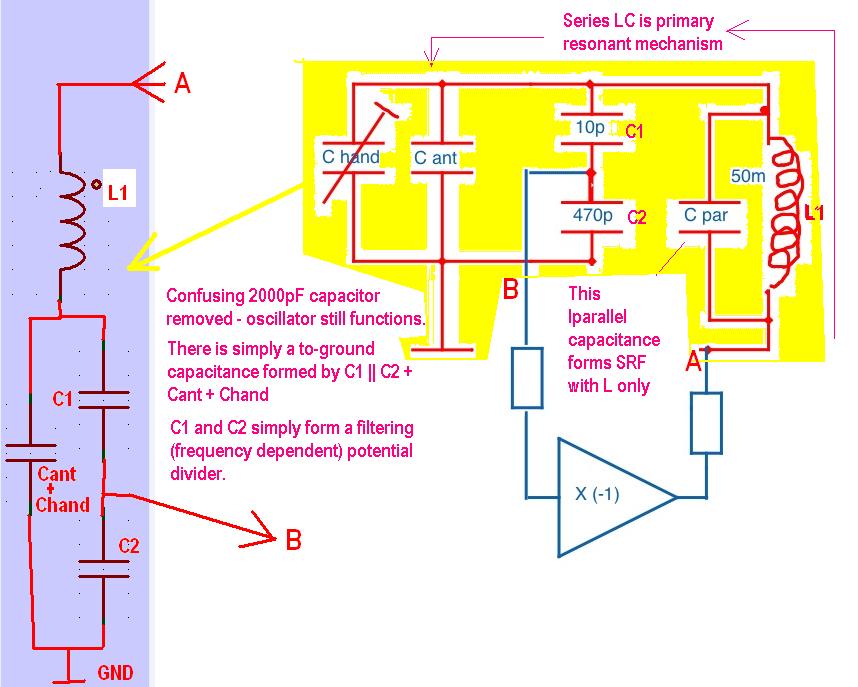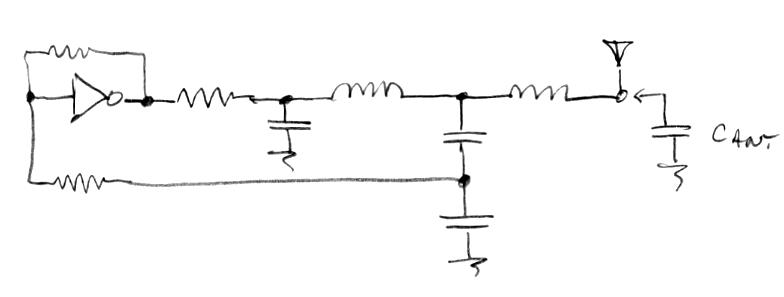[Sorry folks - this aint really about open.theremin - its a technical diversion, hijack at worst, a bit OT at best! :-]
"It naturally runs when you remove C3 and C4. Then there is the capacitive divider formed by C_ant and C5 in parallel with the coil, a simple Colpitts oscillator... still no series resonance... there is a phase shift of 180° between V_drv and V_ant." - Thierry
Hmm .. Are you saying that all oscillators equate to parallel resonant topologies?
C5 was removed in my 2nd experiment - when I said "I just ran the simulation without the 2000pF capacitor (as in, I removed that C but made No other changes)" it was C5 (on my circuit) I was talking about - ok, on Dewsters original it was 2n, on mine it was 1n.. My sole reason for 'redesigning' the oscillator was that my logic models dont run - I have models I constructed myself, but felt that putting a home-made sub-circuit into a hex inverter symbol and running simulation on this could be misleading / dishonest.. At least using a manufacturers spice model anyone should be able to replicate the simulation - IMO, the active part is just there allow proof of concept.
C'ant goes to ground - the coil is driven from one side via R7 / D3 (on my circuit this was done to balance the driving Z, as the 393 is an open collector part)..
I really dont see how C'ant is in parallel with the coil.
But im not going to argue anymore - I have work I should be doing! ;-)
Fred.
(even with C5 in circuit, I dont see this as in parallel with the coil - its on the drive side of the coil to ground, and with the drive resistor is merely acting, I think, to smooth the drive waveform with some concequential shifting of the drive phase - but removing it made no real difference as far as I could see...)
I have not studied this oscillator closely, but Dewster has.. I really dont care what type or class it is - to me though, it looks intuitively like a series resonant topology.



